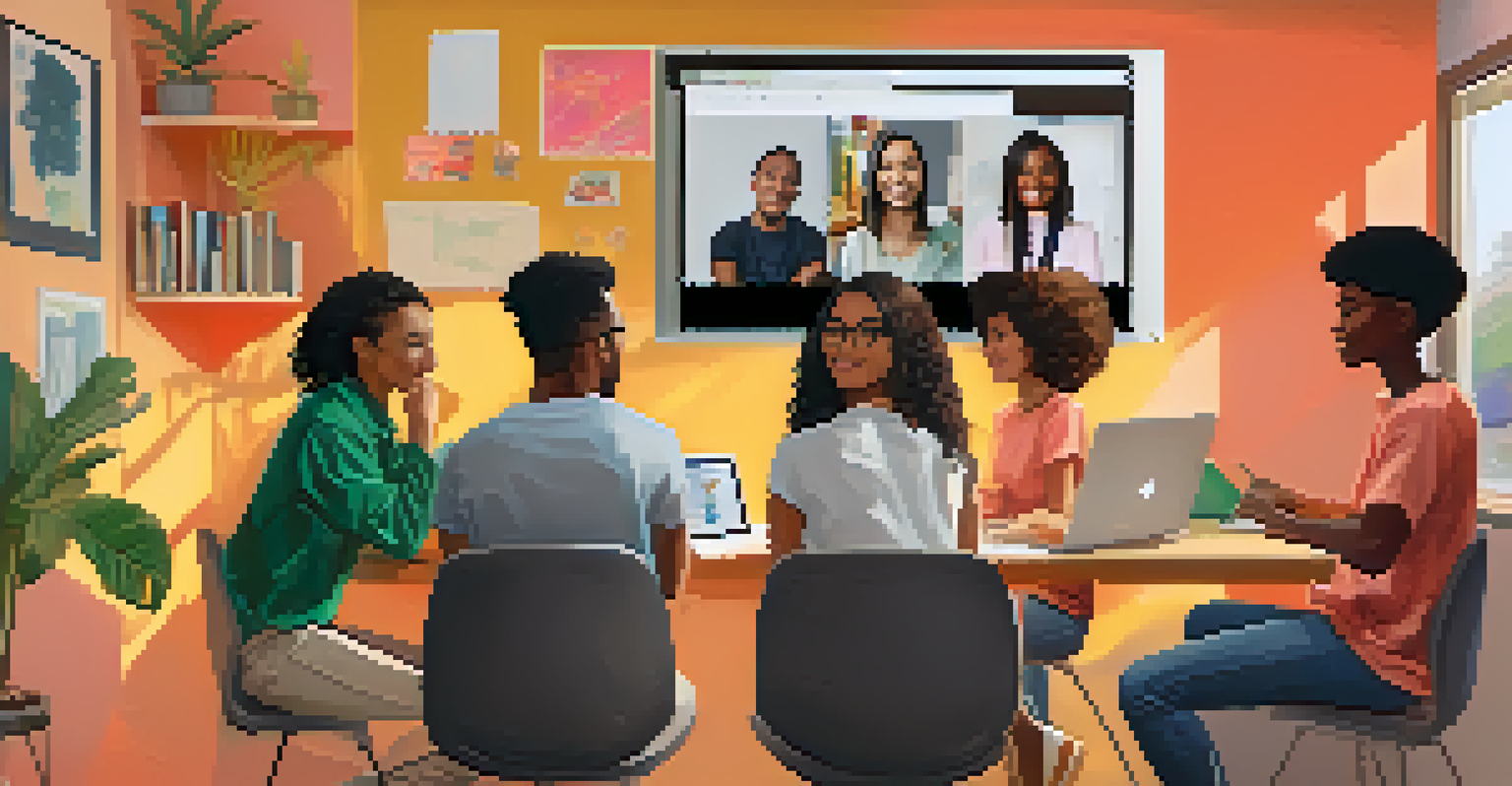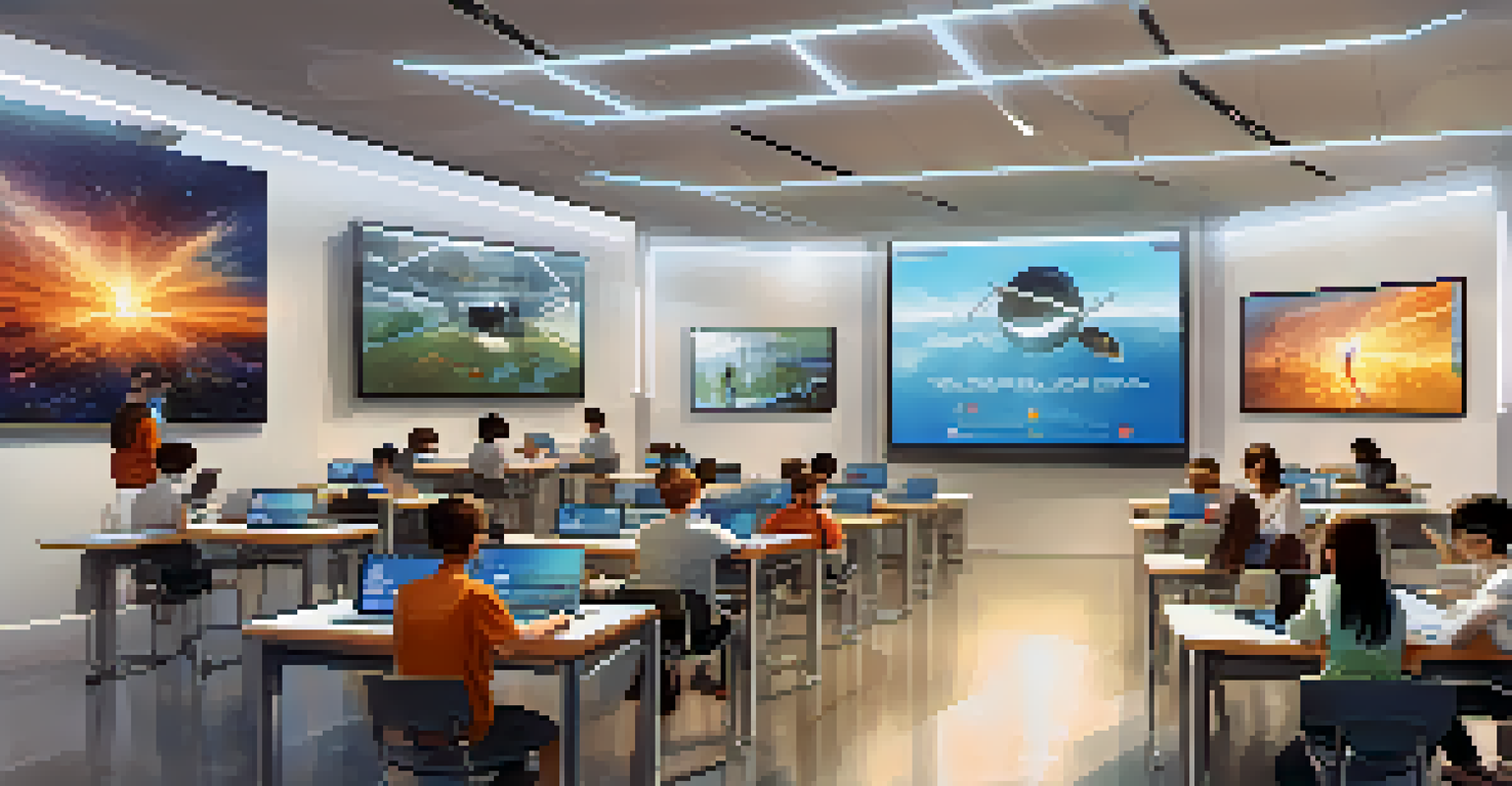Asynchronous Learning: Supporting Learner Autonomy

Understanding Asynchronous Learning and Its Importance
Asynchronous learning refers to educational experiences that occur outside of the traditional classroom setting. This approach allows learners to access materials, engage in discussions, and complete assignments on their own schedule. By breaking away from the constraints of synchronous (real-time) learning, students can tailor their educational experience to fit their individual needs and preferences.
Asynchronous learning is not a limitation but a liberation, enabling students to learn at their own pace and explore their interests more deeply.
The importance of asynchronous learning lies in its ability to cater to diverse learning styles and paces. For example, a student who grasps concepts quickly can move ahead, while others can take their time to fully understand the material. This flexibility not only enhances comprehension but also nurtures a sense of ownership over one’s learning journey.
Moreover, asynchronous learning encourages self-discipline and time management skills. As learners navigate their schedules, they must prioritize tasks and allocate time wisely. This autonomy fosters a sense of responsibility, preparing students for real-world challenges where self-direction is often essential.
The Role of Technology in Asynchronous Learning
Technology is the backbone of asynchronous learning, providing platforms and tools that facilitate access to resources. From online course management systems to multimedia content, technology makes it easier for learners to engage with materials anytime and anywhere. This accessibility is particularly beneficial for those balancing work, family, or other commitments alongside their studies.

For instance, platforms like Moodle or Canvas allow educators to upload lectures, quizzes, and discussion forums, enabling students to interact with content at their convenience. This not only broadens the reach of educational opportunities but also enhances the overall learning experience by integrating various media formats, like videos and podcasts.
Flexibility in Learning Styles
Asynchronous learning allows students to tailor their educational experiences to fit their individual needs and learning paces.
Additionally, technology promotes collaboration among learners, even in an asynchronous environment. Tools such as discussion boards or group projects allow students to connect and share insights, fostering a sense of community and support that can enhance motivation and engagement.
Supporting Learner Autonomy in Asynchronous Settings
Supporting learner autonomy in asynchronous learning environments is crucial for effective education. Educators can empower students by providing clear guidelines and resources, allowing them to explore topics of interest at their own pace. This approach encourages learners to take initiative and seek additional information, fostering a deeper understanding of the subject matter.
Education is not the filling of a pail, but the lighting of a fire.
Moreover, offering choices in assignments or projects can further enhance autonomy. For example, a student might choose between a written report or a presentation, allowing them to showcase their learning in a way that aligns with their strengths. This flexibility not only boosts engagement but also nurtures creativity and critical thinking skills.
Regular feedback is another vital component in promoting learner autonomy. Constructive feedback helps students reflect on their progress and identify areas for improvement while encouraging them to take ownership of their learning journey. This ongoing dialogue between educators and learners builds confidence and reinforces the value of self-directed learning.
Overcoming Challenges in Asynchronous Learning
While asynchronous learning offers many benefits, it also presents unique challenges. One common struggle is the potential for isolation, as students may miss out on the social interactions found in traditional classrooms. To combat this, educators can incorporate collaborative projects or virtual meet-ups that encourage peer engagement and foster a sense of community.
Another challenge is the risk of procrastination. Without the structure of scheduled classes, some students may find it difficult to stay motivated and accountable. Implementing milestones or deadlines can help students manage their time effectively while providing a framework to guide their progress.
Technology Enhances Accessibility
Modern technology provides essential tools and platforms that facilitate access to educational resources anytime and anywhere.
Lastly, the technology gap can hinder some learners from fully engaging in asynchronous learning. Not all students have equal access to devices or reliable internet connections, leading to disparities in educational opportunities. Educators and institutions can address this by providing resources or alternatives, ensuring that all students have the chance to succeed.
The Benefits of Flexible Learning Environments
Flexible learning environments, such as those found in asynchronous learning, offer numerous benefits beyond academic achievement. One of the most significant advantages is the ability to cultivate a growth mindset, where students learn to embrace challenges and view failures as opportunities for growth. This mindset is essential for lifelong learning and personal development.
Additionally, flexible environments allow for the integration of personal interests into the learning process. Students can explore topics that resonate with them, leading to increased motivation and engagement. For example, a learner passionate about environmental science can delve into related coursework, enhancing their educational experience.
Furthermore, these environments encourage the development of critical life skills. By managing their own schedules and learning paths, students practice essential skills such as self-regulation, goal-setting, and decision-making. These competencies are transferable to various aspects of life, preparing learners for future challenges in both their personal and professional endeavors.
Creating an Engaging Asynchronous Learning Experience
To create an engaging asynchronous learning experience, educators must focus on designing interactive and varied content. Using diverse teaching methods—such as videos, podcasts, and interactive quizzes—can cater to different learning styles and keep students engaged. This variety can make the learning process more dynamic and enjoyable.
Incorporating real-world applications is another effective strategy. By connecting theoretical concepts to practical examples, educators can help students understand the relevance of what they are learning. For instance, a course on business management could include case studies from successful companies, allowing learners to see the principles in action.
Fostering Learner Autonomy
Empowering students with choices in their learning promotes self-discipline, initiative, and critical thinking skills.
Finally, encouraging reflection is key to deepening understanding. As learners work through materials, providing prompts for self-reflection can help them process their thoughts and insights. This practice not only reinforces learning but also fosters a deeper connection to the subject matter.
The Future of Asynchronous Learning and Learner Autonomy
Asynchronous learning is poised to play a significant role in the future of education, especially as technology continues to advance. Innovations such as artificial intelligence and adaptive learning platforms are expected to enhance the personalized learning experience. These tools can analyze individual progress and tailor content to meet specific needs, further supporting learner autonomy.
Moreover, the growing acceptance of remote education highlights the importance of flexibility in learning environments. As more institutions recognize the value of asynchronous methods, we can expect to see increased opportunities for students from diverse backgrounds to thrive. This shift can lead to a more equitable educational landscape.

Ultimately, the future of asynchronous learning is bright, with the potential to empower learners to take charge of their educational journeys. By fostering autonomy, adaptability, and resilience, asynchronous learning prepares students not just for academic success, but also for lifelong learning in an ever-changing world.